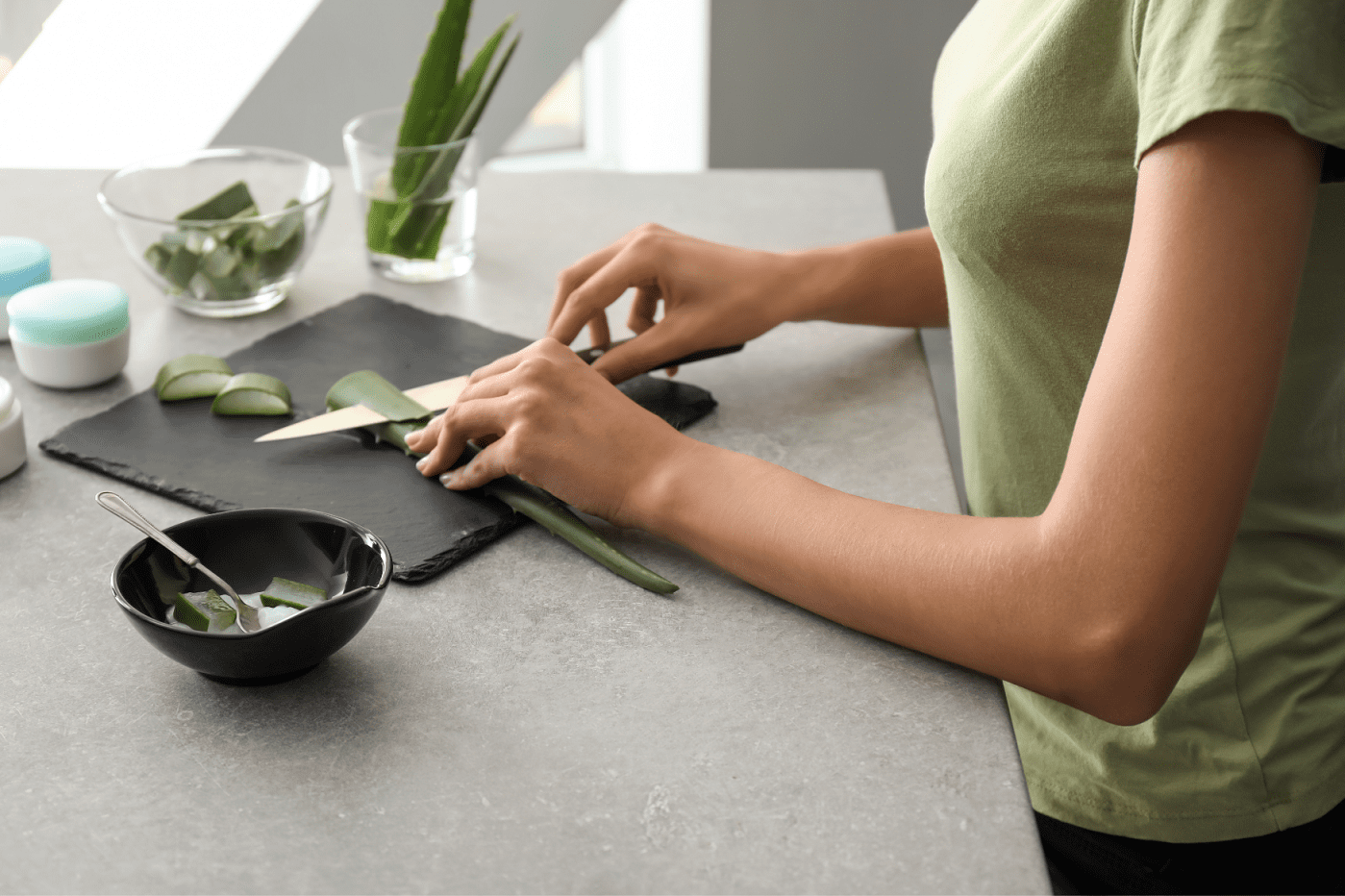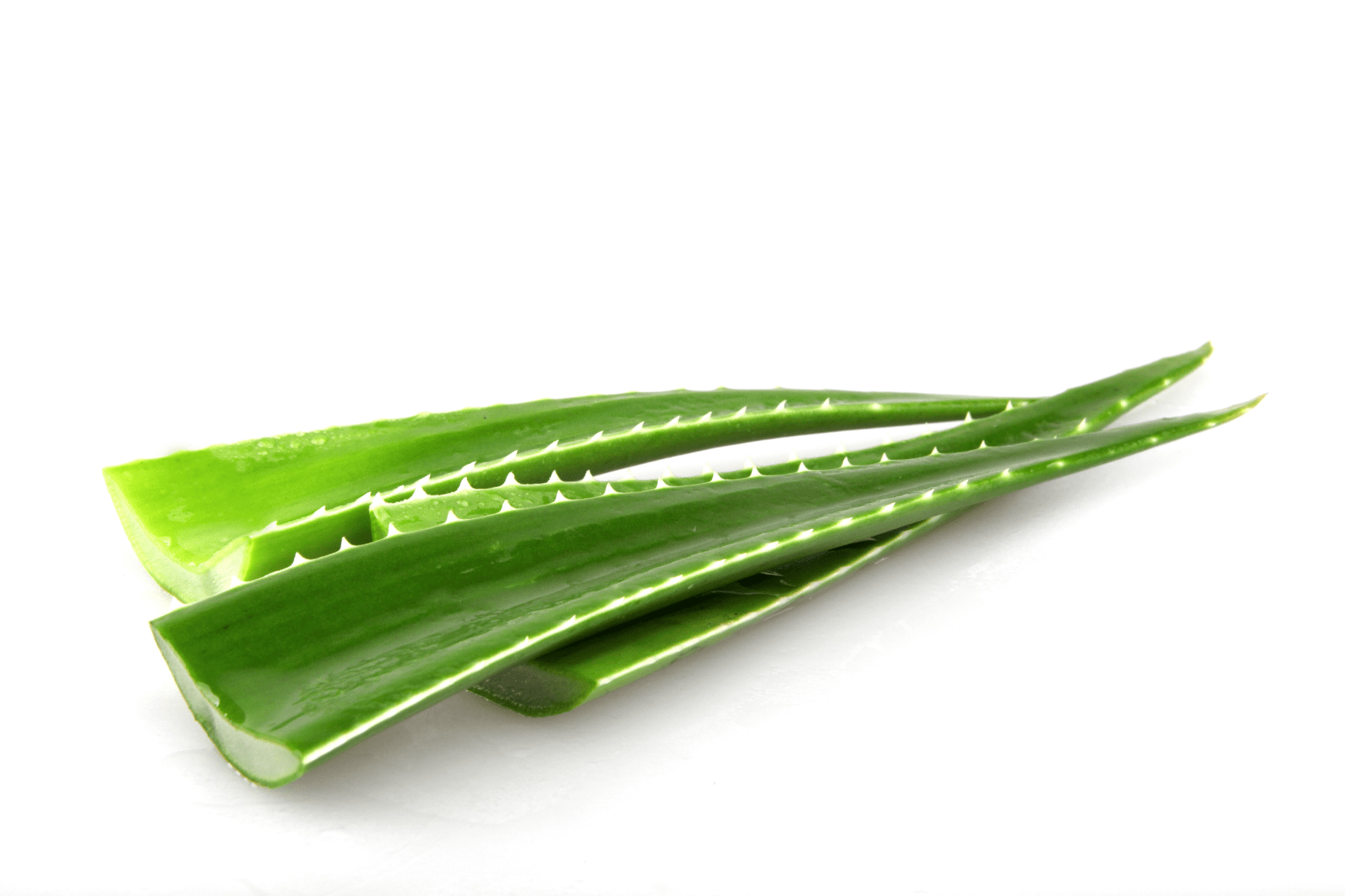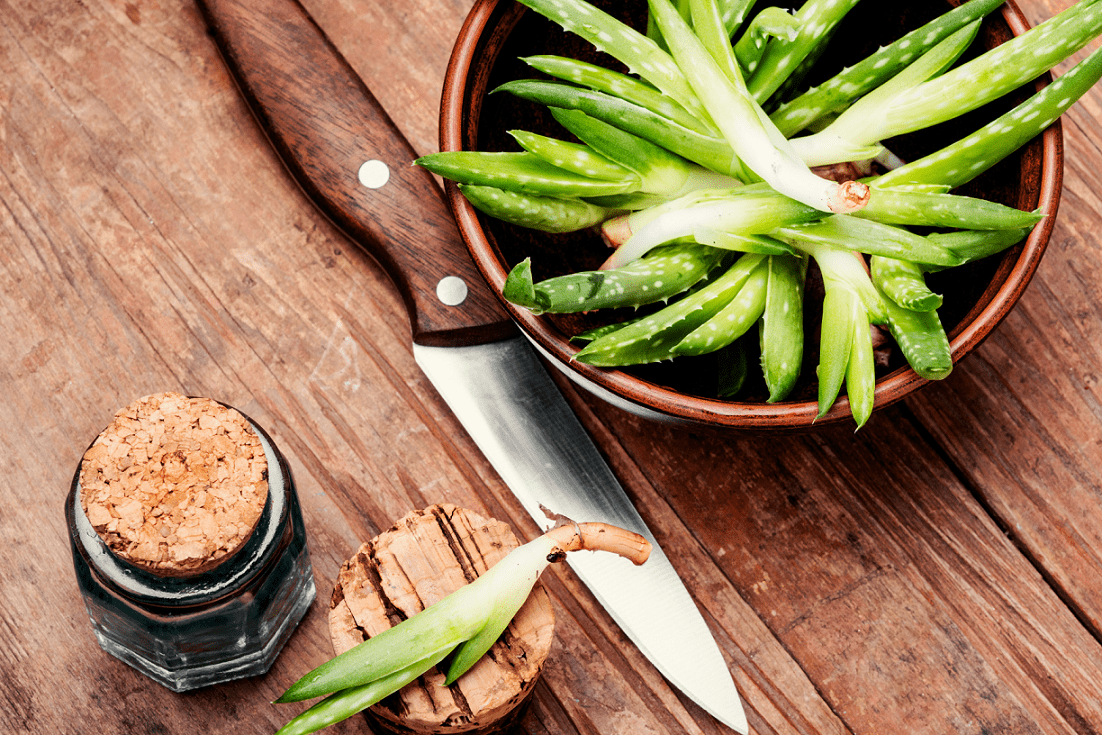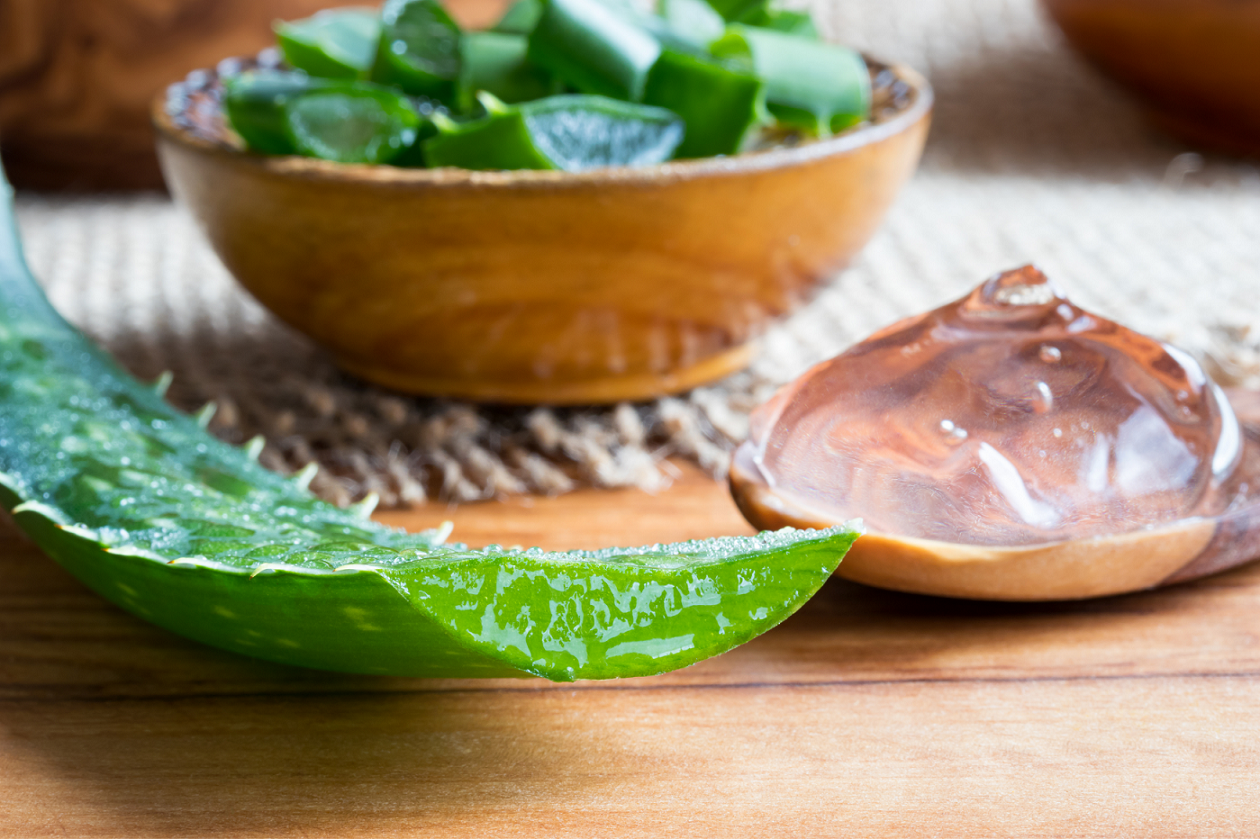Aloe vera is also known as the “queen of the medicinal plants”. Does the tropical plant live up to its reputation? Here, we take aloe vera under the microscope.

Whether for cosmetics, dietary supplements or even as a juice, numerous positive properties are attributed to aloe vera, such as accelerated skin cell renewal. This made the plant a popular skin care product, even in the times of Cleopatra and the ancient Egyptians. But even today, aloe vera enjoys great popularity as a household remedy for sunburn or other skin complaints. In the following article you will learn how you can easily extract the aloe vera gel yourself, and many other fascinating facts about the medicinal plant.
Aloe vera belongs to the lily family and is originally native to tropical climates. In the meantime, however, it has become a popular house plant and can be found on many windowsills. Its thick fleshy leaves, in which the plant stores enormous amounts of water, are striking. Inside the leaves there is a colorless gel-like substance, aloe vera gel, which is used in many areas of the food and cosmetic industry due to its properties.

Oral and topical use of the wonder plant
Two main substances can be extracted from the aloe vera plant: The aforementioned gel and aloe latex. The latter is extracted from the yellowish liquid of the leaf rind and is used in some medicines against constipation. However, its use should be discussed with a doctor, as prolonged use could increase the risk of cancer. Aloe vera gel, on the other hand, is often used in the beauty and health industry. It is particularly beneficial for healing skin irritations and minor burns, such as sunburn. It cools the skin and moisturizes it. The gel is also suitable for more sensitive skin as it maintains the natural acid mantle. But note: The aloe vera plant is often attributed with other healing effects. For example, its constituents are said to alleviate diabetes, and intestinal and joint problems. These statements are, however, not scientifically proven.

How healthy is aloe vera really?
More than 200 different constituents have been detected in the plant. These include, among others, valuable vitamins, minerals, mucilage from carbohydrates, amino acids and enzymes. The range is wide but the concentrations are low. This is due to the fact that aloe vera gel is already 99% water. These constituents are also found in native fruit and vegetables.
The right care for the plant and reproduction
Aloe vera has not only gained a special reputation as a medicinal plant, but it is also popular as a house plant due to it being extremely easy to care for. Even if you aren’t blessed with green fingers, the plant will serve as a long time companion. Aloe vera rarely needs to be watered and grows in nutrient-poor soil. It is also easy to propagate, so you can create several aloe vera plants from a single one. The reason for this is that older plants form small shoots of their own, which can then be easily separated from the actual plant and potted in new soil. Another possibility is to dry the tip of a harvested leaf for a few days and then put it into the soil.

How do you extract the precious aloe vera gel?
Are you the proud owner of your very own aloe vera plant? Then you can easily extract the gel yourself at home. To do this, you must first cut off one of the lower, older leaves at the base of the plant with a sharp knife. It is important to always harvest a whole leaf. In order to get the gel-like substance, which is also suitable for consumption, you must first place the leaf in water for some time, with the cut surface facing down. However, pay attention: The yellowish liquid of the leaf rind contains harmful substances called anthranoids. These have a laxative effect and can increase the risk of developing cancer. Because of the anthranoids, never consume whole leaves.
In order to remove all anthranoids without residue, we recommend cutting off the outer rind of the leaf. Once you have removed this, you can cut the leaves into strips, carefully remove the gel and then wash it thoroughly. You can use the gel to make your own cosmetics, such as creams and hair masks, in no time at all. If you want to be on the safe side, leave the processing to the experts and use industrially processed products.
It is best to store the harvested leaves or the gel (poured into sealed vessels) in your Liebherr refrigerator. This further enhances the cooling effect. The products can also be stored in the freezer. Here’s a little tip: Use the ice cube mold to perfectly portion the aloe vera gel.